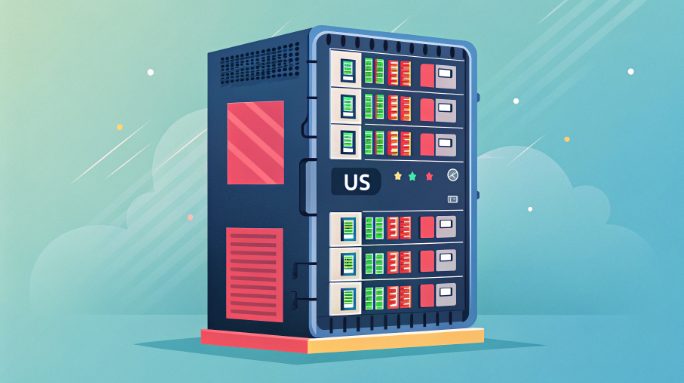How US Servers Manage Million Concurrent Users Smoothly?

Managing million-level concurrent traffic on US servers requires a sophisticated blend of hardware configuration, architectural design, and optimization techniques. Modern hosting solutions in US data centers have evolved to handle unprecedented traffic loads, making them the backbone of global digital infrastructure. This comprehensive guide explores the cutting-edge approaches to maintaining peak server performance under extreme loads, incorporating lessons learned from industry leaders and emerging technological innovations.
Hardware Foundation: Building Blocks for High Performance
The foundation of high-concurrency handling starts with strategic hardware choices. Enterprise-grade servers in US data centers typically feature the latest generation Intel Xeon Scalable processors or AMD EPYC chips, offering unprecedented core density and processing power. These processors work in tandem with advanced memory subsystems utilizing DDR5 ECC RAM, providing both speed and reliability. Storage systems have evolved beyond traditional SSDs, embracing enterprise-grade PCIe 4.0 NVMe drives in sophisticated RAID configurations, complemented by emerging storage technologies like Storage Class Memory (SCM) for ultra-low latency operations. Network infrastructure has seen similar advances, with cards supporting speeds up to 400GbE becoming increasingly common in high-performance environments.
Architecture Optimization: Beyond Hardware Limits
Modern server architectures employ sophisticated load balancing algorithms using advanced tools like NGINX Plus, HAProxy Enterprise, or cloud-native solutions. These systems implement adaptive load balancing strategies, including machine learning-driven predictive scaling and intelligent request routing. Layer 7 load balancing enables content-aware distribution, while backend service discovery ensures optimal resource utilization. Geographic load balancing through Anycast routing has evolved to include sophisticated health checking and automatic failover mechanisms, ensuring seamless operation even during regional outages.
CDN Integration: Edge Computing Strategy
The evolution of CDN technology has revolutionized content delivery, with edge computing capabilities extending beyond simple caching. Modern CDNs incorporate sophisticated features like dynamic site acceleration, real-time image optimization, and intelligent bot management. Edge servers now execute complex business logic, reducing origin server load while maintaining data consistency. Advanced CDNs employ machine learning algorithms to predict content popularity and optimize cache strategies, while implementing sophisticated security measures including DDoS mitigation and Web Application Firewalls (WAF) at the edge.
Database Optimization: The Backbone of Scalability
Database architecture has evolved to meet the demands of massive concurrent connections through sophisticated optimization strategies. Modern systems employ multi-model database approaches, combining the strengths of different database types to handle varying workload patterns. Advanced sharding strategies now include dynamic resharding capabilities and automated shard balancing. The implementation of distributed consensus protocols ensures data consistency across geographically dispersed database clusters, while sophisticated caching layers utilize predictive algorithms to maintain optimal hit rates.
Asynchronous Processing: Event-Driven Architecture
Contemporary hosting environments leverage sophisticated event-driven architectures that go beyond basic pub/sub models. Advanced message brokers implement features like message prioritization, dead letter queues, and sophisticated routing topologies. Stream processing platforms handle complex event processing (CEP) with real-time analytics capabilities. The integration of serverless computing platforms enables automatic scaling of processing resources based on event volume, while maintaining cost efficiency.
Network Infrastructure Advantages
US data center network infrastructure has reached new heights of sophistication, with software-defined networking (SDN) enabling unprecedented levels of control and automation. Advanced traffic engineering techniques optimize routing based on real-time network conditions, while sophisticated QoS mechanisms ensure critical traffic receives appropriate prioritization. The implementation of segment routing and MPLS-TE provides granular control over traffic flows, while emerging technologies like programmable data planes enable custom packet processing at line rate.
Conclusion: Building Resilient Infrastructure
The landscape of high-concurrency hosting in US data centers continues to evolve, driven by technological innovation and increasing demands for performance and reliability. Success in this domain requires not just technical excellence, but also a deep understanding of emerging trends and technologies. As we move forward, the integration of artificial intelligence, quantum computing, and advanced automation will further transform how we approach high-concurrency challenges, ensuring US server infrastructure remains at the forefront of global digital innovation.

